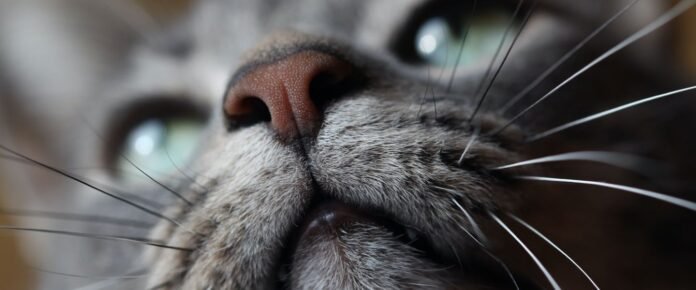What does your cat’s muzzle have to do with a winemaker’s latest cuvée? We will try to explain this to you.
Do you know what chromatography is? This method, which is used to separate the different components of a mixture by sorting them according to their migration rate, is essential in many fields, such as perfumery and oenology. Through this process, for example, a winegrower can gather a lot of information about his wine, especially about the development of its fermentation and therefore its taste.
I subscribe
According to a study published in the journal PLOS Computational Biology, to make gas chromatography even more efficient, science would benefit from inventing a system inspired by the anatomy of a cat’s nose. Replicating its operation could make it possible to separate the molecules in a gas mixture much more efficiently.
In a press release published on June 29, 2023, one of the study’s authors, Kai Zhao, professor of otolaryngology at the University of Ohio, spoke on the subject: “We know so much about sight and hearing, and so much less about smell. Our work could lead to a better understanding of the development of nasal structures and the functional goals they serve.”
As Discover Magazine, which seized the information, points out, the cat’s nasal and respiratory system is extremely complex. The air that the cat inhales fills a labyrinth made up of small branches, the nasal turbinates, which clean and moisten it. It is only in a second step that the air molecules will be able to access the olfactory region, associated with the olfactory epithelium – name given to the mucous membrane of the nasal cavity whose role is to detect smells.
These nasal turbinates are the key. And if humans also have them, they form an infinitely less complex network than in cats. Hence the fact that our sense of smell is much less efficient than theirs.
Dual management
Through their work, the researchers (from China, Great Britain and the United States) were able to understand how the control of air currents in the cat’s nose takes place. Two airflows are actually controlled simultaneously and in parallel. The first passes slowly through a long tube, which makes it possible to sort out the various chemical elements present. As for the other, which circulates faster, it is analyzed instantly to identify important odors as quickly as possible.
It all forms a dual detection system that allows the cat to quickly identify the presence of a predator (or a target), but also to obtain a large amount of information from a sniffed area.
The authors of the study point out that mammals’ noses do not function so differently from a part of their inner ear, the cochlea, a spiral canal that is specific to this class of animals. However, the gas chromatographs currently in use should be compared to the hearing apparatus of birds or other vertebrates rather than to that of mammals: the principle is just a tube in the form of a dead end, states the summary of the Study.
By imitating this spiral system typical of mammals, and especially that of cats, scientists have determined that they could obtain a chromatograph whose efficiency would be more than a hundred times greater than the apparatus normally used. A gift for our winemaker who should soon be able to analyze his wine with even more precision. Health!
